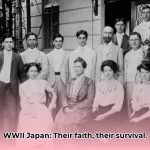Ever wondered what it feels like to finally reach the finish line after a long, hard journey? John Bunyan’s Pilgrim’s Progress gives us a powerful look at that, following both Christian and Christiana as they struggle and triumph on their way to a heavenly destination. This isn’t just a story about religion; it’s about facing life’s challenges, the importance of sticking with it, and how much better the journey is when you have friends along the way. We’ll dive into the book, focusing on the moment when the pilgrims say, “I see myself now at the end of my journey,” and see what that means for them – and for us. It’s about finding ways to build strength, keep our faith alive, and appreciate the support of others on our own personal journeys, whatever they may be.
“I See Myself Now at the End of My Journey”: Pilgrim’s Progress and the Power of Perspective
John Bunyan’s Pilgrim’s Progress isn’t merely a story; it’s a timeless allegory reflecting our own life journeys, exploring themes of faith, perseverance, and salvation. The powerful phrase, “I see myself now at the end of my journey,” resonates deeply because it embodies the universal human experience of accomplishment, of looking back on struggles overcome and goals achieved. Let’s explore how this sentiment unfolds in the two parts of this classic allegory and explore the power of symbolism, themes, and spiritual truths.
Part I: Christian’s Solitary Pilgrimage – A Journey of Self-Reliance
In the first part of Pilgrim’s Progress, we follow Christian on his solitary pilgrimage from the City of Destruction to the Celestial City. His path is fraught with peril, testing his physical and spiritual strength. He faces challenges like the Slough of Despond, representing periods of deep despair, and the temptations of Vanity Fair, symbolizing the allure of worldly pleasures that can distract from one’s true purpose.
Bunyan masterfully uses symbolism throughout the narrative, highlighting individual strength and resilience. Giant Despair, Apollyon, and the treacherous terrain all represent the inner and outer challenges we face in life. These obstacles serve as metaphors for the hurdles we encounter in our own lives. Christian’s encounters with figures like Mr. Worldly Wiseman, who tempts him with easier paths, illustrate the constant struggle between worldly desires and spiritual aspirations.
Christian’s eventual arrival at the Celestial City represents the fulfillment of his journey and the reward for his unwavering faith. His declaration, “I see myself now at the end of my journey,” is not merely a statement of arrival; it’s a profound declaration of spiritual victory, a hard-earned triumph over doubt, temptation, and despair. For Christian, this statement symbolizes his salvation, his release from the burdens of sin and the anxieties of the world. This moment signifies the culmination of his individual struggle and the ultimate reward for his unwavering commitment to his faith.
Part II: Christiana’s Family Pilgrimage – The Power of Community
Part II shifts the focus from individual struggle to the strength found in community and familial love. Christiana, Christian’s wife, and her children embark on their own journey toward the Celestial City, facing many of the same obstacles as Christian, but their experience is markedly different. Their pilgrimage is a shared experience, a testament to the power of collective faith and mutual support.
This journey emphasizes the importance of companionship and mutual support in overcoming life’s challenges. Characters like Greatheart the guide and Mercy, a fellow pilgrim, offer assistance, encouragement, and protection to Christiana and her children. Their presence highlights the value of having a supportive community to lean on during difficult times.
Their arrival at the Celestial City mirrors Part I’s climax, but it resonates with a deeper meaning. The phrase, “I see myself now at the end of my journey,” now signifies not just personal achievement but the collective triumph of faith, familial unity, and unwavering support. It’s a celebration of togetherness, a resounding affirmation that we don’t have to bear life’s burdens alone. For Christiana and her family, the arrival reflects a triumph founded on the strength of their bonds and their shared commitment. This speaks to the crucial role played by community in overcoming life’s obstacles.
Contrasting the Journeys: Individualism vs. Collectivism
Both parts of Pilgrim’s Progress offer invaluable life lessons, illuminating the importance of both individual strength and community support. Part I emphasizes the importance of inner resilience, personal determination, and unwavering faith in the face of adversity. Part II underscores the equally critical role of companionship, support, and the strength derived from shared faith. Both are essential components of a fulfilling life. A balance of both approaches is often ideal, as there will be times when we require inner strength and times when we benefit greatly from a supportive community. The phrase “I see myself now at the end of my journey” takes on a different, yet equally important meaning depending upon which narrative we view.
The enduring appeal of Pilgrim’s Progress lies in its timeless relevance, highlighting the universal aspects of the human experience. It speaks to our shared struggles, our triumphs, and our enduring need for hope and connection. Whether it’s Christian’s solitary struggle or Christiana’s journey with her family, the message remains consistent: life is a journey, and reaching the end – whatever that end might be for you – demands celebration and appreciation for the journey itself.
Practical Applications: Wisdom for the Modern Pilgrim
We can glean practical steps from Bunyan’s work applicable to our own lives, recognizing our personal challenges:
- Define Your Destination: Identify your personal “Celestial City” – your long-term goals, your vision of success, and what truly matters to you.
- Acknowledge the Obstacles: Recognize and accept your own “Sloughs of Despond,” your personal challenges and difficulties. Understanding them is the first step to overcoming them.
- Cultivate Your Support Network: Build strong, meaningful relationships and cultivate a supportive community – your fellow travelers who will help you along the way.
- Embrace Perseverance: Remember that every journey has its ups and downs. Cultivate resilience, maintain a positive mindset, and never give up on your goals.
- Find Meaning in the Journey: Appreciate the lessons learned, the growth experienced, and the connections made along the way. The journey itself is just as important as the destination.
The enduring power of Pilgrim’s Progress lies in its ability to resonate across cultures and generations. It reminds us that we are all pilgrims on a journey, and the end of that journey, however we define it personally, is a reason to pause, reflect, and celebrate the strength, resilience, and community that got us there. What does “I see myself now at the end of my journey” mean to you?
The Allegorical Tapestry: How to Interpret Symbolism in Part II
In John Bunyan’s Pilgrim’s Progress, Part II, Christiana and her children embark on a spiritual journey mirroring that of her husband, Christian, in Part I. The sequel offers new insights into themes of faith, community, and perseverance. But how do we unravel the rich tapestry of allegorical symbolism within this sequel? Let’s explore.
Expanding the Narrative: Christiana’s Unique Perspective
Part II expands upon the themes of Part I, going beyond a mere repetition of Christian’s journey. While it revisits many of the same locations and challenges, it places a greater emphasis on communal support, familial bonds, and the importance of nurturing faith within a family unit.
It deepens the narrative, offering fresh perspectives on the challenges and rewards of the spiritual quest. Christiana’s experience builds on Christian’s, enhancing our understanding of perseverance, faith, and community in the face of adversity. Her journey isn’t simply “the same story again,” but a richer, more nuanced exploration of the allegorical landscape, highlighting the transformative power of shared faith and mutual support.
Deciphering the Symbols: A Methodical Approach
Understanding how to interpret the allegorical symbolism in Bunyan’s Pilgrim’s Progress Part II requires a methodical approach. Consider these steps:
- Identify Key Characters: Each character represents an aspect of the spiritual life, a virtue, or a vice. Mercy, for instance, embodies compassionate service and her name itself offers insight to her purpose. Explore the etymology and common connotations associated with the names of the characters, as Bunyan purposefully imbued them with symbolic meaning.
- Analyze the Setting: The locations in the story aren’t merely geographical; they are symbolic representations of the challenges and opportunities encountered on the spiritual path. Vanity Fair, the Slough of Despond, and the Delectable Mountains all function as metaphors, embodying the struggles, temptations, and joys of the Christian life.
- Uncover the Metaphors: Physical journeys, encounters with allegorical figures, and symbolic objects all serve as metaphors for the inner workings of the human soul and the complexities of the spiritual journey.
- Connect with the Themes: Bunyan emphasizes perseverance, trust in God’s guidance, communal support, and the joys and trials of faith. How do the symbols in Part II weave together these themes? How do the trials faced by Christiana and her companions underscore the importance of faith, perseverance, and reliance on divine providence?
- Compare and Contrast with Part I: How does Christiana’s journey differ from Christian’s? Do these differences signify societal or theological changes? What about their ultimate destinations? Explore how the contrasting experiences
- Discover Fermentation Revolution: The Health Benefits of Kimchi: Sustainable Farming Practices - July 30, 2025
- Discover Living Crystals: The Giant Gypsum Formations in Naica’s Cave: A Geological Marvel - July 30, 2025
- Master Molecular Gastronomy: The Science That Turns Your Kitchen into a Lab: Beginner-Friendly Recipes - July 30, 2025
















